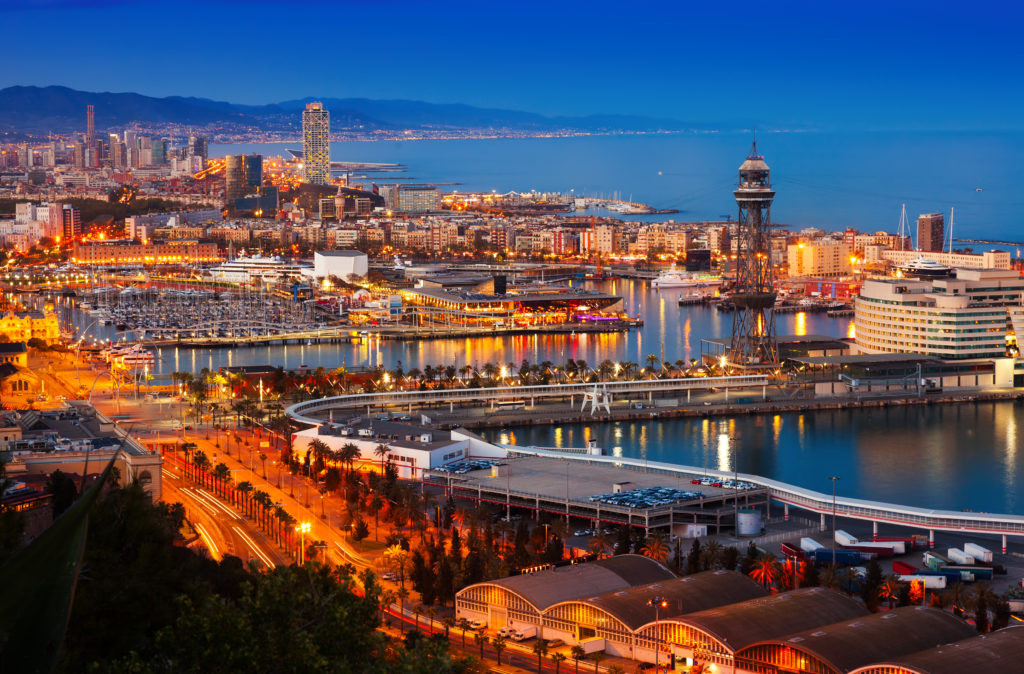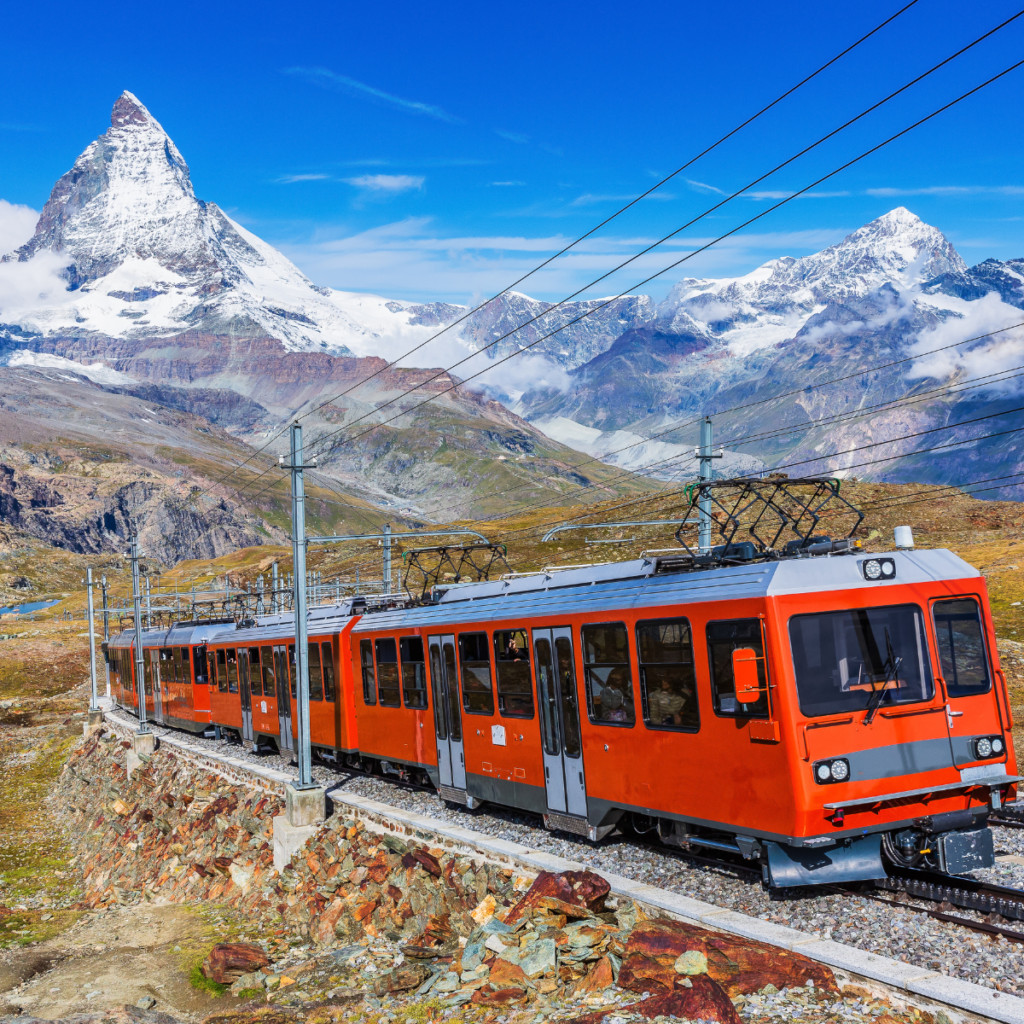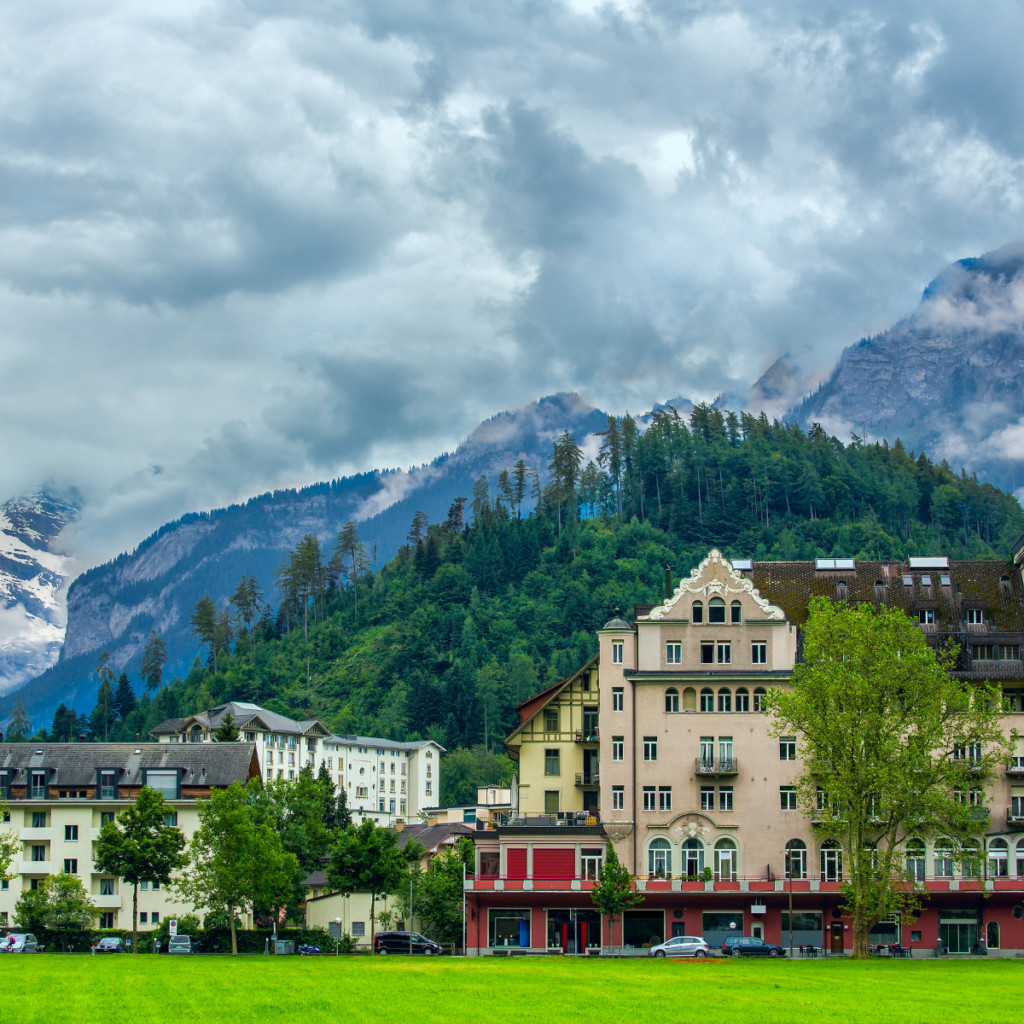Planning a Swiss adventure from Mexico? Wondering about the expenses? This comprehensive guide on gaymexico.net breaks down the costs of flights, accommodation, transportation, and food, offering insights valuable for LGBTQ+ travelers and all adventure seekers. Uncover budget-friendly tips and resources for planning your dream Swiss getaway. Let’s explore Swiss travel costs, Swiss Travel Pass options, and budget travel strategies.
1. What is the Average Cost of a Trip to Switzerland from Mexico?
The estimated cost for a 6-day trip to Switzerland from Mexico, including flights, transfers, meals, and guided tours, is approximately $50,000 MXN. Several factors can influence this figure. To get a clearer picture, it’s helpful to break down the expenses into categories. This allows travelers, including LGBTQ+ individuals, to understand how each element impacts the overall cost.
- Flights: International flights often represent a significant portion of the travel budget.
- Accommodation: Switzerland offers a range of lodging options, from budget-friendly hostels to luxurious hotels.
- Transportation: Switzerland’s public transportation system is efficient but can be costly without proper planning.
- Food: Dining expenses can vary widely depending on the type of restaurant and cuisine.
- Activities: Sightseeing, tours, and other activities contribute to the overall experience but also add to the expense.
2. How Much are Flights from Mexico to Switzerland?
Flight prices from Mexico to Switzerland typically range from $15,000 MXN ($799 USD) to $32,000 MXN ($1,700 USD). This depends on the season, airline, and booking time. Booking during the off-season or during special promotions can significantly lower costs.
To save money on flights, consider the following tips:
- Travel Season: Avoid peak travel seasons like summer (June-August) and winter holidays (December-January). Instead, travel during the shoulder seasons (April-May and September-October) for lower fares and fewer crowds.
- Advance Booking: Book flights several months in advance to secure better deals. Airlines often increase prices as the travel date approaches.
- Price Alerts: Use Google Flights or other flight comparison websites to set up price alerts. This way, you’ll be notified when prices drop, allowing you to purchase tickets at the most favorable time.
- Flexible Dates: Be flexible with your travel dates. Flying on weekdays (Tuesday-Thursday) is often cheaper than flying on weekends.
- Connecting Flights: Consider connecting flights instead of direct flights. While they may take longer, they can be significantly cheaper.
- Budget Airlines: Look into budget airlines that fly to Europe, although you may need to transfer to another flight to reach Switzerland.
- Consider nearby Airports: Basel Airport (BSL) is in Switzerland and close to Germany and France, so you can cross the border.
- Use travel rewards programs: If you have airline miles, this is the best time to use them to lower the cost of flights.
 Aerial view of the city of Barcelona, Spain at dusk, indicating potential flight options from Mexico.
Aerial view of the city of Barcelona, Spain at dusk, indicating potential flight options from Mexico.
3. What are the Transportation Costs Within Switzerland?
Switzerland boasts an efficient transportation network, including buses, trains, and boats. For tourists, the Swiss Travel Pass is an excellent option. It offers unlimited travel across the country.
3.1 What is the Swiss Travel Pass?
The Swiss Travel Pass is a must-have for foreign travelers. It allows unlimited travel on trains, buses, and boats for a set number of days (3, 4, 6, 8, or 15).
3.2 What are the Benefits of the Swiss Travel Pass?
The Swiss Travel Pass offers numerous benefits:
- Unlimited travel on trains, buses, and boats.
- Free travel on premium panoramic trains (seat reservation and/or surcharge may apply).
- Free public transportation in over 90 cities.
- Free admission to over 500 museums.
- Included mountain excursions to Rigi, Stanserhorn, and Stoos.
- Up to 50% discount on other mountain excursions.
- Up to 30% discount on SBB RailAway offers.
- The Swiss Family Card allows children aged 6-16 to travel free with a parent holding a valid STS ticket.
- Children under 6 travel free with an adult holding a valid ticket.
3.3 What is the Cost of the Swiss Travel Pass?
Swiss Travel Pass prices vary based on the class (second or first) and the number of days. Adult passes range from approximately $4,758 MXN ($254 USD) to $13,843 MXN ($739 USD). A Swiss Travel Pass Youth offers up to 30% off for those under 25.
| Pass Type | Duration | Approximate Cost (USD) | Benefits |
|---|---|---|---|
| Swiss Travel Pass (Adult) | 3 Days | $254 – $350 | Unlimited travel, free museum entry, discounts on mountain excursions |
| Swiss Travel Pass (Adult) | 15 Days | $739 – $950 | Unlimited travel, free museum entry, discounts on mountain excursions |
| Swiss Travel Pass Youth | 3 Days | Discounted | Same as adult pass, but for travelers under 25 |
| Swiss Half Fare Card | 1 Month | $135 | Allows travelers to purchase tickets for trains, buses, boats, and some mountain railways at half price |
| Point-to-Point Tickets | Varies | Varies | Best for travelers who only plan to take a few specific journeys |
| Saver Day Pass | 1 Day | $55 – $105 | Allows unlimited travel on the Swiss Travel System network for one day |
| Regional Pass | Varies | Varies | Ideal for exploring a specific region of Switzerland, offering unlimited travel within the chosen area |
| Swiss Museum Pass | 1 Month | $190 | Grants free admission to over 500 museums throughout Switzerland |
| Interrail/Eurail Pass | Varies | Varies | For travelers who plan to visit multiple European countries, including Switzerland |
| Group Tickets | Varies | Discounted | Available for groups of 10 or more people traveling together |
| City Passes | Varies | Varies | Available in cities like Zurich and Geneva, offering free or discounted access to attractions, public transport, and other services |
3.4 Are There Alternatives to the Swiss Travel Pass?
For those who won’t use public transport extensively, point-to-point tickets may be more economical. A Swiss Half Fare Card is a good option if you plan to travel less frequently.
 Scenic view of Humanttay Lagoon, Peru, symbolizing potential travel planning and alternative destinations.
Scenic view of Humanttay Lagoon, Peru, symbolizing potential travel planning and alternative destinations.
4. What are the Accommodation Costs in Switzerland?
Accommodation in Switzerland is known to be expensive, especially hotels. However, various options cater to different budgets.
4.1 What Types of Accommodation are Available?
Accommodation options range from luxury hotels to budget-friendly hostels and Airbnb rentals. Luxury accommodations can cost upwards of $2,737 MXN ($145 USD) per night, while budget options start around $757 MXN ($40 USD) per night.
4.2 How to Find Affordable Accommodation
- Research: Explore different types of accommodation, including hotels, hostels, guesthouses, and Airbnb rentals.
- Read Reviews: Check reviews before booking to ensure quality and reliability.
- Location: Consider staying slightly outside major cities, where accommodation prices tend to be lower.
- Travel Off-Season: Hotel rates are generally lower during the off-season.
- Book in Advance: Booking accommodation well in advance can help secure better deals.
- Consider alternatives: Consider Couchsurfing, house sitting, or farm stays for alternative accommodation options.
4.3 Are There LGBTQ+ Friendly Accommodation Options?
Many hotels and guesthouses in Switzerland are LGBTQ+ friendly. Websites like gaymexico.net can provide recommendations and reviews from other LGBTQ+ travelers.
5. What are the Food Costs in Switzerland?
Food costs in Switzerland can vary significantly. Expect to pay between $262 MXN ($14 USD) and $500 MXN ($25 USD) for a meal. However, costs depend on the type of restaurant and your dining preferences.
5.1 How to Save Money on Food
- Cook Your Own Meals: Opt for accommodations with kitchen facilities. Buy groceries from local supermarkets to prepare your own meals.
- Eat at Local Eateries: Look for local restaurants and cafes that offer affordable meals.
- Take Advantage of Lunch Specials: Many restaurants offer lunch specials that are cheaper than dinner.
- Visit Markets: Explore local markets for fresh produce, cheese, and bread at reasonable prices.
- Avoid Tourist Traps: Restaurants in popular tourist areas tend to be more expensive. Venture off the beaten path for better deals.
5.2 What Local Foods Should I Try?
Don’t miss out on Swiss specialties like cheese fondue, raclette, and Swiss chocolate. Trying local cuisine is part of the travel experience.
- Cheese Fondue: A communal pot of melted cheese served with bread for dipping.
- Raclette: Melted cheese scraped onto plates and served with potatoes, pickles, and onions.
- Rösti: A crispy potato pancake.
- Zürcher Geschnetzeltes: Sliced veal in a creamy mushroom sauce.
- Birchermüesli: A healthy breakfast dish made with oats, fruit, nuts, and yogurt.
- Swiss Chocolate: Indulge in high-quality Swiss chocolate.
 Scenic landscape in Switzerland, representing travel possibilities and exploration.
Scenic landscape in Switzerland, representing travel possibilities and exploration.
6. What Activities Should I Consider?
Switzerland offers numerous activities, from hiking in the Alps to exploring historic cities. Plan your itinerary to align with your interests and budget.
6.1 Popular Activities
- Hiking: Explore scenic trails in the Swiss Alps.
- Skiing: Enjoy world-class skiing in resorts like Zermatt and St. Moritz.
- City Tours: Visit historic cities like Zurich, Geneva, and Bern.
- Lake Cruises: Take a scenic boat ride on Lake Geneva or Lake Lucerne.
- Museums: Visit museums to learn about Swiss history and culture.
- Scenic Train Rides: Experience breathtaking views on iconic train routes like the Glacier Express and Bernina Express.
- Outdoor Adventures: Try paragliding, canyoning, or white-water rafting for an adrenaline rush.
6.2 Free or Low-Cost Activities
- Hiking: Many hiking trails are free to access.
- Public Parks: Visit public parks and gardens.
- Free Walking Tours: Join free walking tours in major cities.
- Window Shopping: Explore local shops and markets without buying anything.
- Picnics: Pack a lunch and have a picnic in a scenic spot.
- Attend Free Events: Check local event listings for free concerts, festivals, and exhibitions.
7. How Can LGBTQ+ Travelers Plan a Budget-Friendly Trip?
LGBTQ+ travelers can plan a budget-friendly trip by following general cost-saving tips and leveraging resources like gaymexico.net for specific recommendations.
7.1 Resources for LGBTQ+ Travelers
- gaymexico.net: Find LGBTQ+ friendly accommodations, bars, and events.
- Local LGBTQ+ Organizations: Connect with local organizations for tips and advice.
- Travel Blogs: Read travel blogs and forums for insights from other LGBTQ+ travelers.
- Online Communities: Join online communities to ask questions and share experiences.
7.2 Safety and Inclusivity
Switzerland is generally safe and inclusive for LGBTQ+ travelers. However, it’s always a good idea to be aware of local customs and laws.
7.3 Cultural Sensitivity
While Switzerland is progressive, respecting local customs and traditions is essential.
8. What are Some Sample Itineraries?
Creating an itinerary helps you plan your activities and estimate costs accurately.
8.1 Budget Itinerary (6 Days)
- Day 1: Arrive in Zurich, check into a budget hotel/hostel, explore the city center.
- Day 2: Take a day trip to Lucerne, visit the Chapel Bridge, and explore the old town.
- Day 3: Travel to Interlaken, hike in the surrounding mountains, and enjoy the scenery.
- Day 4: Visit Bern, the Swiss capital, explore the old town, and visit the Bear Park.
- Day 5: Travel to Geneva, visit the Jet d’Eau, and explore the city’s international district.
- Day 6: Depart from Geneva.
8.2 Mid-Range Itinerary (6 Days)
- Day 1: Arrive in Zurich, check into a mid-range hotel, and explore the city’s cultural attractions.
- Day 2: Take a scenic train ride to Lucerne, visit Mount Rigi, and enjoy a boat ride on Lake Lucerne.
- Day 3: Travel to Interlaken, try adventure activities like paragliding or canyoning, and stay in a comfortable hotel.
- Day 4: Visit Bern, take a guided tour of the old town, and enjoy a traditional Swiss meal.
- Day 5: Travel to Geneva, visit the United Nations Office, and enjoy a lake cruise.
- Day 6: Depart from Geneva.
8.3 Luxury Itinerary (6 Days)
- Day 1: Arrive in Zurich, check into a luxury hotel, and enjoy fine dining.
- Day 2: Take a private tour of Lucerne, visit Mount Titlis, and enjoy a gourmet lunch.
- Day 3: Travel to Interlaken, stay in a luxury resort, and enjoy spa treatments.
- Day 4: Visit Bern, take a private helicopter tour of the Alps, and enjoy a Michelin-starred dinner.
- Day 5: Travel to Geneva, stay in a five-star hotel, and enjoy a private yacht tour on Lake Geneva.
- Day 6: Depart from Geneva.
9. What is the Best Time to Visit Switzerland?
The best time to visit Switzerland depends on your interests. Summer (June-August) is ideal for hiking, while winter (December-February) is perfect for skiing.
9.1 Summer (June-August)
- Pros: Warm weather, ideal for hiking and outdoor activities, long daylight hours.
- Cons: Peak tourist season, higher prices, crowded attractions.
9.2 Winter (December-February)
- Pros: Excellent skiing conditions, festive atmosphere during the holiday season.
- Cons: Cold weather, shorter daylight hours, higher prices at ski resorts.
9.3 Shoulder Seasons (April-May & September-October)
- Pros: Mild weather, fewer crowds, lower prices.
- Cons: Unpredictable weather, some attractions may have limited hours.
10. What are Some Essential Travel Tips for Switzerland?
Prepare for your trip with these essential travel tips.
10.1 Currency and Payment
The currency in Switzerland is the Swiss Franc (CHF). Credit cards are widely accepted, but it’s a good idea to carry some cash.
10.2 Language
Switzerland has four official languages: German, French, Italian, and Romansh. English is also widely spoken.
10.3 Electricity
Switzerland uses Type C and Type J plugs. The standard voltage is 230 V, and the frequency is 50 Hz.
10.4 Tipping
Tipping is not mandatory in Switzerland. Service charges are usually included in the bill.
10.5 Staying Connected
Consider purchasing a local SIM card for affordable data and calls.
 A promotional image for GayMexico.net, highlighting awareness and inclusivity in travel planning.
A promotional image for GayMexico.net, highlighting awareness and inclusivity in travel planning.
FAQ: Your Questions About Traveling to Switzerland from Mexico Answered
1. How much money do I need per day in Switzerland?
On average, you can expect to spend between $100 to $300 USD per day in Switzerland, depending on your travel style. Budget travelers can manage with $100, while those seeking comfort and luxury may spend $300 or more. Accommodation, food, and activities are the main cost drivers.
2. What is the cheapest way to travel around Switzerland?
The cheapest way to travel around Switzerland is by taking advantage of the Swiss Travel Pass. This pass offers unlimited travel on trains, buses, and boats, and it includes access to many museums and attractions.
3. Is Switzerland expensive for tourists?
Yes, Switzerland is generally considered an expensive country for tourists. However, with careful planning and budgeting, you can minimize your expenses and enjoy a memorable trip without breaking the bank.
4. How long should I spend in Switzerland?
The ideal duration for a trip to Switzerland depends on your interests and the amount of time you have available. A week to 10 days is usually sufficient to explore the major cities and scenic regions.
5. What are the best places to visit in Switzerland?
Some of the best places to visit in Switzerland include Zurich, Lucerne, Interlaken, Bern, Geneva, Zermatt, and St. Moritz. Each destination offers unique attractions and experiences.
6. Can I use Euros in Switzerland?
While the official currency of Switzerland is the Swiss Franc (CHF), many establishments, especially in tourist areas, accept Euros. However, you may receive change in Swiss Francs, and the exchange rate may not be favorable.
7. Is it safe to drink tap water in Switzerland?
Yes, it is safe to drink tap water in Switzerland. The water quality is excellent, and tap water is often preferred over bottled water.
8. What should I pack for a trip to Switzerland?
When packing for a trip to Switzerland, consider the season and the activities you plan to undertake. Essential items include comfortable walking shoes, layers of clothing, a waterproof jacket, sunscreen, and a universal adapter.
9. Do I need a visa to travel to Switzerland from Mexico?
Mexican citizens do not need a visa to enter Switzerland for tourism purposes for stays of up to 90 days within a 180-day period. However, you must have a valid passport and sufficient funds to cover your expenses.
10. Are there any LGBTQ+ specific travel considerations for Switzerland?
Switzerland is generally LGBTQ+ friendly, and same-sex marriage is legal. However, it’s always a good idea to research local customs and resources like gaymexico.net for specific recommendations and insights.
Switzerland offers breathtaking landscapes, vibrant cities, and rich cultural experiences. By planning carefully and using resources like gaymexico.net, you can enjoy a memorable and budget-friendly trip. Whether you’re interested in hiking, skiing, exploring cities, or simply relaxing by a lake, Switzerland has something to offer every traveler.
Ready to plan your Swiss adventure? Visit gaymexico.net for detailed travel guides, event listings, and community connections to make your trip safe, enjoyable, and unforgettable. Connect with the LGBTQ+ community in Mexico and beyond, and start exploring the beauty and diversity of Switzerland today!
Address: 3255 Wilshire Blvd, Los Angeles, CA 90010, United States
Phone: +1 (213) 380-2177
Website: gaymexico.net